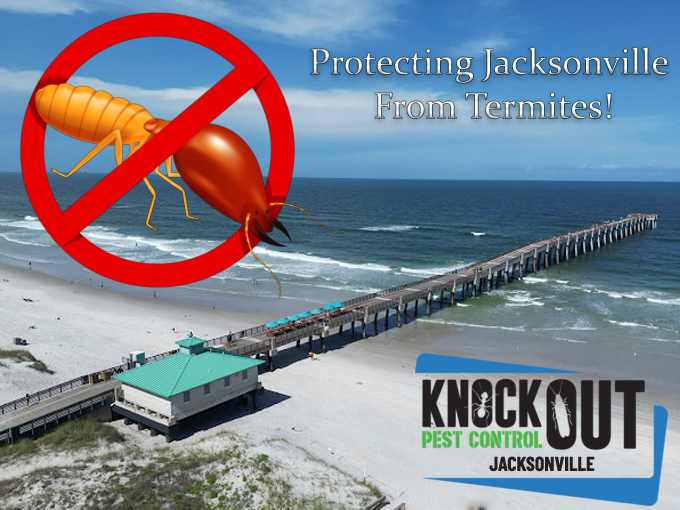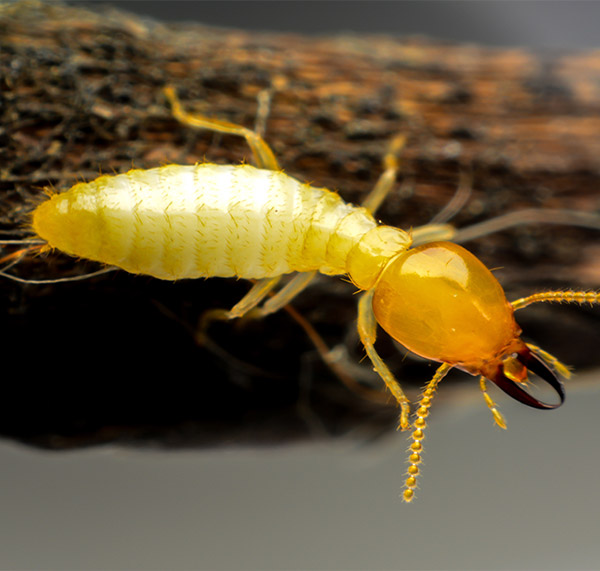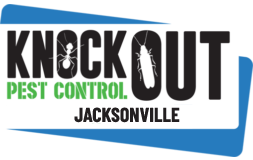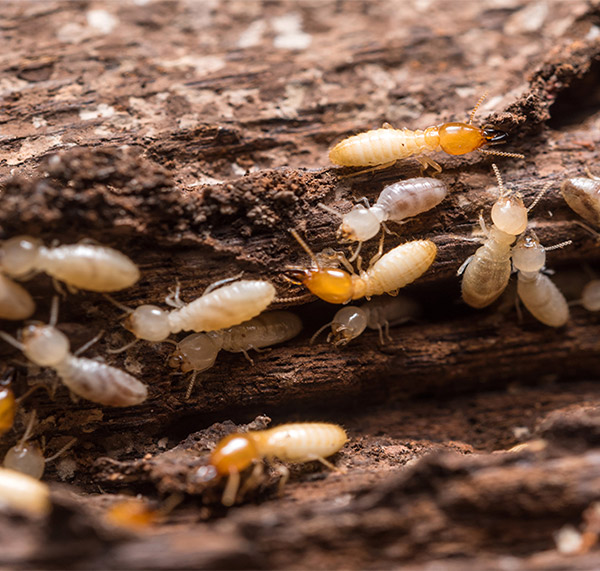Jacksonville’s Most Trusted Termite Control Specialists

10% OFF FOR NEW CUSTOMER, SENIORS & MILITARY. CALL TODAY
Expert Termite Control in Jacksonville, FL – Fast, Safe, & Reliable
Termites are one of the most destructive pests in Jacksonville, silently causing thousands of dollars in property damage before homeowners even notice. Florida’s humid subtropical climate—especially in Jacksonville—creates year-round conditions for drywood and subterranean termites to thrive, weakening foundations, walls, and wooden structures. If you’re searching for “termite control near me in Jacksonville,” acting fast is critical to protect your most valuable investment.
At KnockOut Pest Control, we specialize in Jacksonville termite control backed by 35+ years of experience combating the unique challenges of Northeast Florida’s climate. Our licensed technicians use cutting-edge detection tools and eco-friendly treatments to eliminate infestations, whether you’re facing subterranean termites in your soil or drywood colonies in your attic. Unlike seasonal solutions in other regions, our year-round protection plans are tailored to Jacksonville’s warm, humid environment where termites never stop swarming.
Don’t wait for termites to spread—contact Jacksonville’s trusted termite exterminators today for a free inspection and safeguard your home with proven, localized solutions.
Jacksonville-Specific Termite Challenges Related to Florida’s Climate
Jacksonville’s Unique Climate and Termite Activity
Jacksonville’s subtropical climate creates ideal conditions for termite populations to thrive year-round. Unlike colder regions where termites enter dormancy during winter months, Jacksonville’s consistent warmth and humidity allow termites to remain continuously active in every season1. With average winter temperatures in the 70s, termites in Jacksonville can forage and reproduce without seasonal interruptions, leading to faster colony growth and more aggressive feeding patterns1.
The city’s proximity to water sources and frequent rainfall creates moisture-rich soil conditions that particularly favor subterranean termite activity. This consistent ground moisture provides the perfect environment for subterranean termites to establish massive colonies that can number in the millions5. Jacksonville’s average annual rainfall of over 50 inches further contributes to ideal termite breeding conditions throughout the year.
Hurricane Impact on Termite Activity in Jacksonville
Jacksonville’s vulnerability to tropical storms and hurricanes creates additional termite pressure not seen in other regions. Storm damage from hurricanes and heavy rains frequently creates new openings in foundations and wooden structures, providing easy access points for termites to infiltrate homes1. The aftermath of storms also increases moisture levels in building materials, making them more attractive to termites.
Research shows that termite activity often increases significantly following major weather events in Jacksonville, as damaged trees and debris create new food sources for existing colonies while providing opportunities for new colonies to establish10. Homes with storm damage are particularly vulnerable to termite infestations if repairs are delayed or improperly completed.
Jacksonville’s Sandy Soil and Termite Challenges
Jacksonville’s predominantly sandy soil presents a unique challenge for termite control. The porous nature of sandy soil allows subterranean termites to tunnel more easily and travel greater distances to find food sources. These termites can travel hundreds of feet underground from their colonies to reach the wooden structures of homes5. This extensive foraging range means that even properties without obvious wood-to-soil contact may still be vulnerable to termite invasion.
The combination of sandy soil and high moisture content creates ideal conditions for subterranean termites to establish extensive tunnel systems throughout Jacksonville properties. Professional termite control services in Jacksonville must account for these soil conditions when developing effective barrier treatments.

Termite Species in Jacksonville: Understanding the Threats
Subterranean Termites
Subterranean termites are a highly organized and destructive species of termites that live underground. They are social insects, living in colonies that can consist of millions of individuals. These colonies are made up of different castes, including workers, soldiers, and reproductive termites. The workers are responsible for building and maintaining the nest, while the soldiers defend the colony against predators. The reproductive termites are responsible for expanding the colony by establishing new nests.
One of the most interesting aspects of subterranean termites is their ability to construct elaborate tunnel systems. These tunnels allow them to access aboveground food sources without being exposed to predators or harsh environmental conditions. The tunnels are made from a combination of soil, saliva, and other secretions, creating a strong and durable structure. This underground network is essential for the survival and expansion of the colony.
Subterranean termites are notorious for their destructive behavior. They feed on wood and other plant materials, causing significant damage to buildings and structures. They can go undetected for long periods of time, silently weakening the structural integrity of a building. This makes them a serious threat to homes and can result in costly repairs. It is important to be proactive in termite prevention and detection to mitigate the potential damage caused by these pests.
Swarming Termites
Swarming termites (also known as alates) are a fascinating phenomenon in the insect world. These termites are part of the reproductive caste of a colony and are responsible for starting new colonies. Swarming usually occurs during specific times of the year, typically after a rainstorm or during warmer months. During this time, thousands of winged termites emerge from their nests and take flight in search of a suitable mate and a new location to establish a colony.
The swarming behavior is an essential part of their life cycle. They are equipped with long wings that allow them to fly away from their original colony. Once they find a mate, they shed their wings, pair up, and search for a suitable location to start a new colony. This behavior ensures genetic diversity among termite colonies and helps in the dispersal of termites to new areas.
Swarming termites can be both beneficial and problematic. On one hand, they play a crucial role in nutrient recycling and soil fertility by breaking down dead plant material. They also provide food for many other animals in the ecosystem. On the other hand, when they swarm in large numbers near human settlements, they can become a nuisance. Their presence can lead to structural damage to buildings and other wooden structures, making termite control measures necessary to prevent infestations.
Drywood Termites
Drywood termites are a species of termites that differ from other types of termites as they do not require contact with soil to survive. Unlike subterranean varieties, drywood termites establish their colonies within dry wood structures, such as furniture, wooden beams, or even dead tree branches. They obtain moisture from the wood they consume and have a unique ability to extract water from it, allowing them to thrive in arid environments.
Drywood termites are known for their ability to cause significant damage to wooden structures. They tunnel through the wood, creating chambers and galleries where they live and reproduce. Over time, their feeding activities weaken the wood, leading to structural integrity issues. Signs of an infestation may include the presence of tiny fecal pellets (resembling sawdust), discarded wings near windowsills or light fixtures, or hollow-sounding wood when tapped.
Controlling drywood termites can be challenging due to their ability to establish colonies deep within wooden structures. Treatment methods often involve localized or whole-structure fumigation, heat treatment, or targeted spot treatments using insecticides. Regular inspections of wooden structures and prompt identification of infestations are crucial in preventing extensive damage. Taking preventive measures such as sealing cracks in wood and ensuring proper ventilation can also help minimize the risk of infestations.
ALL YEAR PROTECTION
Once we have determined the best way to eliminate pests and prevent further infestations, we will set up a treatment schedule that works for you. Because the temperatures in Northeast Florida very rarely drop low enough to significantly reduce some insect populations, the most effective plans include year-round treatments.
- Paper/Books
- Dywall & Insulation
- Swimming Pool Liners & Water Filtration Systems


